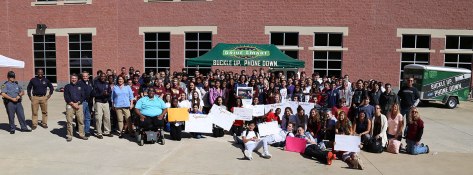By Dr. Robert Molloy
The National Transportation Safety Board (NTSB) often responds to crashes in all modes of transportation with recommendations to regulators to ensure that vehicle operators are not fatigued or impaired. In commercial trucking, for example, we have made many recommendations to prevent fatigued truckers from getting behind the wheel. There are also long-established rules about the use of impairing drugs by commercial truck drivers.
But what if a trucker just breaks the rules?
 On October 4, the NTSB met to discuss a tragic crash in Chattanooga, Tennessee, in which a tractor-trailer ran into a line of slow-moving cars at a speed of at least 78 miles per hour. This began a chain-reaction crash that killed six people and injured four others. The driver in this accident chose not to follow the hours-of-service rules and get appropriate rest before he began his trip. He also chose to use methamphetamine before getting behind the wheel. As a result, the driver was impaired by both drugs and fatigue as he approached a clearly visible work zone with slowed and stopped traffic. He deliberately ignored the rules that had been in place to prevent this very tragedy.
On October 4, the NTSB met to discuss a tragic crash in Chattanooga, Tennessee, in which a tractor-trailer ran into a line of slow-moving cars at a speed of at least 78 miles per hour. This began a chain-reaction crash that killed six people and injured four others. The driver in this accident chose not to follow the hours-of-service rules and get appropriate rest before he began his trip. He also chose to use methamphetamine before getting behind the wheel. As a result, the driver was impaired by both drugs and fatigue as he approached a clearly visible work zone with slowed and stopped traffic. He deliberately ignored the rules that had been in place to prevent this very tragedy.
In such a case, what is there to learn about safety? What can be done to improve safety when a truck driver just decides to break the rules?
This question illuminates the value of a safety investigation that does not determine blame or fault, and does not conduct criminal or disciplinary proceedings. Rather, the NTSB’s sole mandate is safety. This means that we not only recommend better rules for truck drivers, but we also continue to look for ways to prevent future tragic crashes, even when a driver simply breaks the rules.
One way to prevent another crash like the one in Chattanooga is to keep such dangerous drivers away from commercial trucking. In the Chattanooga crash, we found that the driver’s employer could have used a pre-employment hair drug test to discover the driver’s history of drug use before he was hired. We also found that the state of Kentucky had a list of citations and previous collisions associated with the driver’s 5-year driving record, but his employer had only consulted the driver’s 3-year driving record in the hiring process.
In this case, we did make recommendations to the regulator, the Federal Motor Carrier Safety Administration (FMCSA), not to adopt new rules for truck drivers, but to help keep dangerous drivers that break the rules out of commercial trucking. We asked the FMCSA to disseminate information to carriers about hair drug testing. We also asked the FMCSA to specify that an employer must consider any evidence in a driver’s crash record that the driver had violated laws governing motor vehicle operation. We asked that the FMCSA evaluate motor carrier use of and perspectives on their Pre-employment Screening Program, and to collect and publish best practices for pre-employment investigations and inquiries.
In addition, we recommended that the states of Kentucky and Idaho include driver status, license expiration, driving restrictions, violations, and crashes in their 3-year driver records.
In the case of a tragic crash like the one that happened in Chattanooga, it is for other appropriate authorities to pursue punishment. Our findings and recommendations reflect our mission to improve safety.
 Our Most Wanted List of safety improvements includes ending impairment in transportation and reducing fatigue-related accidents. One way to make progress toward these goals is to ensure that truck drivers with a demonstrable pattern of unsafe behavior are filtered out of the transportation system before their behavior results in tragedy.
Our Most Wanted List of safety improvements includes ending impairment in transportation and reducing fatigue-related accidents. One way to make progress toward these goals is to ensure that truck drivers with a demonstrable pattern of unsafe behavior are filtered out of the transportation system before their behavior results in tragedy.
Dr. Robert Molloy is the Director of the NTSB Office of Highway Safety.


